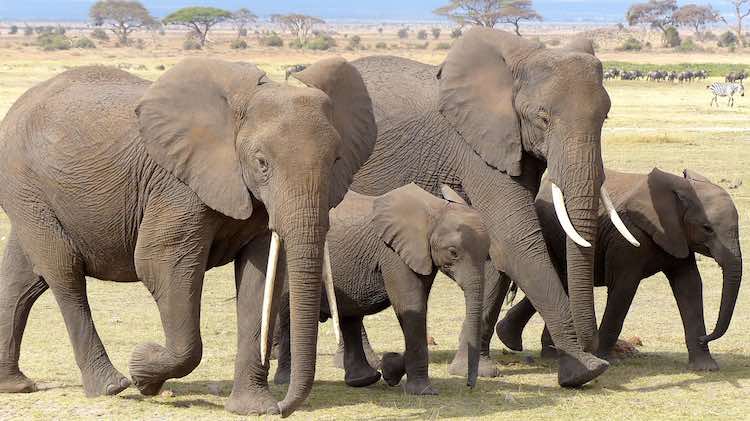Reprinted with permission from World At Large, a news website reporting on nature, science, health, and travel.
After 6 years of decline, the numbers of elephants killed illegally in Africa has dropped from 10% to less than 4%.
Attempting to disseminate the overall poaching problem down into its component mechanisms, the researchers analyzed annual surveillance data from 53 different sites across the continent between 2002 and 2017, totaling half of all the African elephants in the world.
This was an important step that often stands in the way of people understanding the problem of poaching as it relates to individual communities of elephants, rather than the species as a whole.
RELATED: Rats Are Saving Elephants From Hidden Landmines on Their Migration Routes
The research findings, which were published in Science last week, highlights the fact that while elephant poaching is a pan-African problem, it’s clear that certain populations are more targeted, while others are growing in size, like the herds in Kruger National Park and some, like in Etosha, Namibia, that have never experienced poaching at all.
One of the major focuses of the paper was the demand for ivory. Ivory has long been used as a precious artisan material in Chinese culture, and the demand for ivory in the middle-class was a strong predictor of increased elephant poaching during the 21st century.
With China’s combination of a growing middle-class, historical affinity for ivory as an artisanal product, widespread involvement in various African economies, and the summarized data of seized in-bound ivory shipments, the research suggests that China is one of the major drivers of elephant poaching.
LOOK: Farmer is Sweet on Bee Hives As Perfect Fence to Keep Elephants Safely Away
As such, one of the perceived reasons for the bounce-back of elephant numbers has been a recent ban on ivory trade in China. In 2017, China made it illegal to trade in ivory, and it’s considered that a popular PSA condemning the trade in shark fin, rhino horn, and elephant ivory that featured Jackie Chan and Yao Ming fist-bumping an elephant’s trunk was particularly effective.
Since ivory trade is illegal, good market data for the commodity remains inaccessible; instead the researchers measured supply by analyzing large-scale ivory seizures, and measured market value by the typical market price of illegal mammoth ivory.
Having established the overall ivory exporting rates and value, the team went on to assess the factors which might contribute to the distribution of poaching rates across the continent as well as the ability to control supply. For this, they examined factors which might point to poor national stability such as infant mortality rate, perceived corruption index, poverty distributions, site area, and law-enforcement adequacy.
Looking at all the different co-factors, the researchers found that poverty density, specifically in villages around examined sites, and corruption in state institutions were the biggest drivers along with ivory market price.
“It is striking that poverty and corruption-related covariates correlate with local and country-wide levels of poaching more strongly than estimates of law enforcement adequacy,” writes the authors of the study.
WATCH: How a Former Teacher Beat the Mining Industry and Saved the Rare Snow Leopards
“This is possibly due to difficulty in estimating law enforcement adequacy; however, all assessors were trained and we consider it likely that targeting poverty and corruption really are more effective options.”
The study concludes by saying that as of 2017, the birth rate of the African elephant was replenishing the over 320,000 individuals roaming the African wilderness. Since demand is limited now that China has banned the trade of ivory, tackling supply will be far more effective than it once was.
Be Sure And Share The Good News With Your Friends On Social Media – File photo by jbpic, CC




















